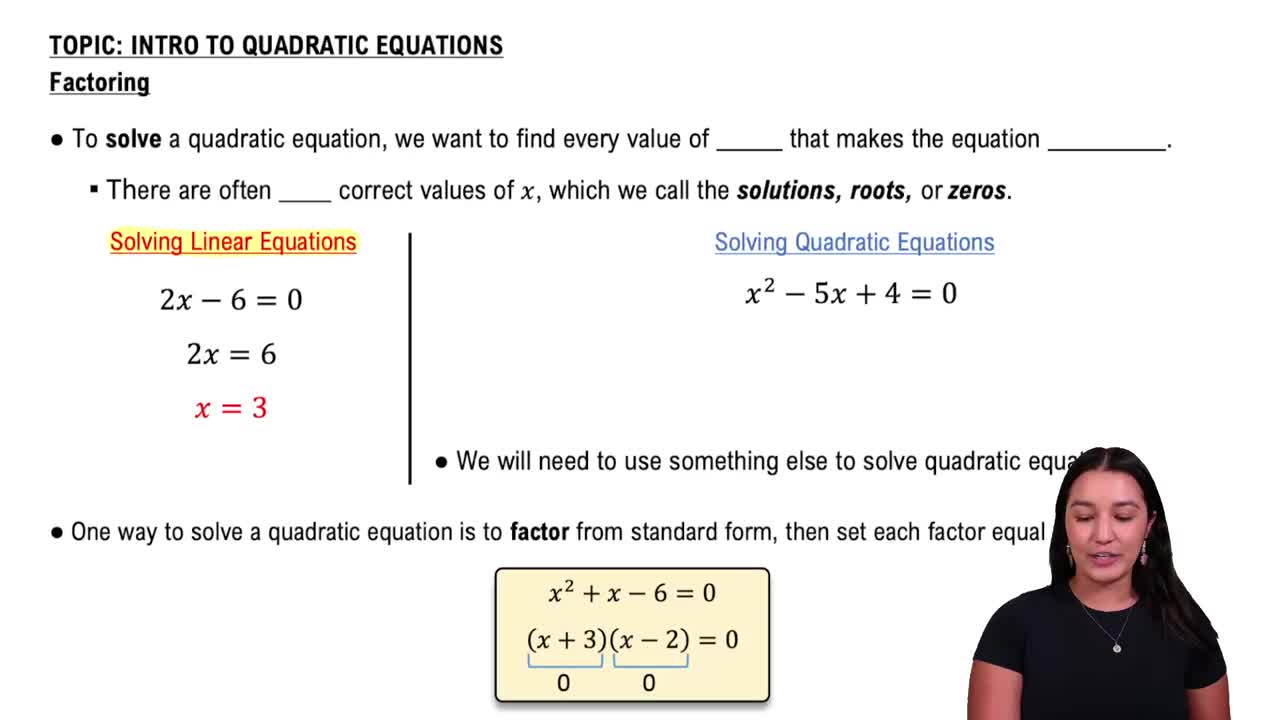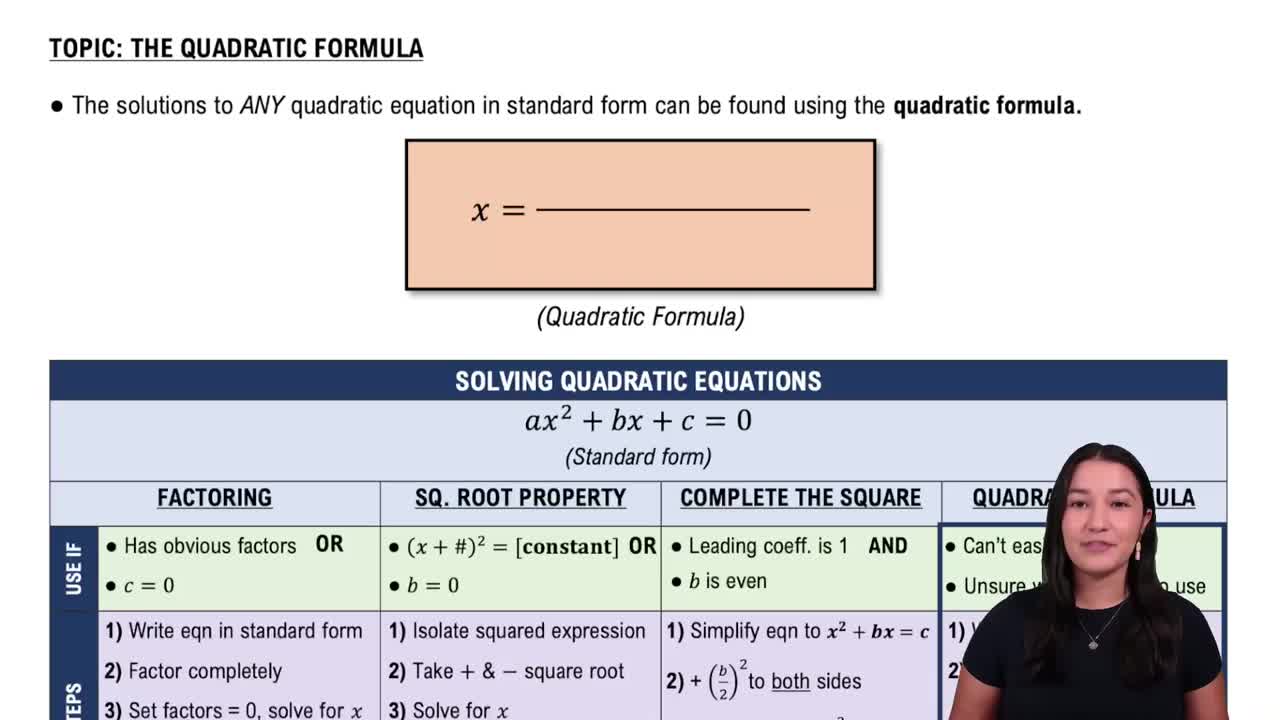Here are the essential concepts you must grasp in order to answer the question correctly.
Zero-Factor Property
The Zero-Factor Property states that if the product of two factors equals zero, then at least one of the factors must be zero. This principle is essential for solving quadratic equations, as it allows us to set each factor equal to zero to find the solutions. For example, if we have an equation in the form (x - a)(x - b) = 0, we can conclude that x = a or x = b.
Recommended video:
Introduction to Factoring Polynomials
Factoring Quadratic Equations
Factoring quadratic equations involves rewriting the equation in a product form, typically as (x - p)(x - q) = 0, where p and q are the roots of the equation. This process simplifies solving the equation by transforming it into a form where the Zero-Factor Property can be applied. In the given equation x^2 + 2x - 8 = 0, we need to find two numbers that multiply to -8 and add to 2.
Recommended video:
Solving Quadratic Equations by Factoring
Quadratic Formula
The Quadratic Formula is a method for solving quadratic equations of the form ax^2 + bx + c = 0, given by x = (-b ± √(b² - 4ac)) / (2a). This formula provides a systematic way to find the roots of any quadratic equation, even when factoring is difficult or impossible. It is particularly useful when the equation does not factor neatly into integers.
Recommended video:
Solving Quadratic Equations Using The Quadratic Formula
 Verified step by step guidance
Verified step by step guidance Verified Solution
Verified Solution



 6:12m
6:12m